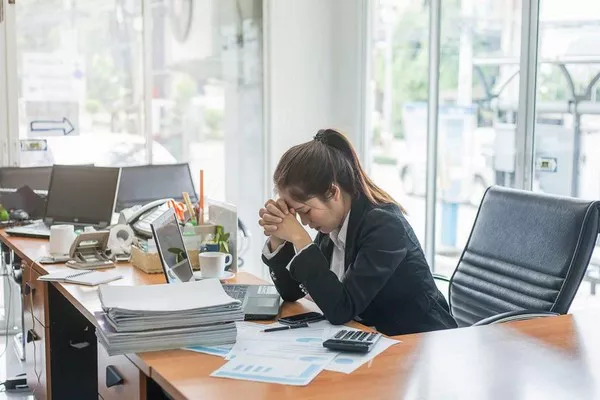Anxiety disorders are among the most common mental health conditions, affecting millions of people worldwide. When anxiety becomes overwhelming, it can interfere with daily activities, including work. Many individuals struggling with anxiety find themselves unable to perform their job effectively, leading them to take time off to focus on their mental health. However, one of the biggest concerns for employees is how long they can be off work due to anxiety and what legal protections exist to support them.
In this article, we will explore the factors that influence the duration of time off for anxiety, legal considerations, employer policies, and strategies for returning to work in a healthy and sustainable way.
Understanding Anxiety and Its Impact on Work
Anxiety can manifest in many ways, including excessive worry, panic attacks, restlessness, difficulty concentrating, and even physical symptoms like headaches, fatigue, and nausea. In the workplace, anxiety can lead to decreased productivity, difficulty making decisions, increased absenteeism, and even conflicts with colleagues or supervisors.
Severe anxiety can make it impossible for individuals to function effectively in their job. When symptoms reach this level, taking time off work may be necessary to prevent burnout and allow for proper treatment. However, the amount of time needed will vary based on several factors.
Factors That Determine How Long You Can Be Off Work with Anxiety
1. Severity of the Anxiety Disorder
The duration of time off work will largely depend on how severe the anxiety is. Some individuals may need only a few days or weeks to recover, while others may require several months. Anxiety disorders range from mild to severe, and the treatment plan will be tailored to the individual’s needs.
Mild Anxiety: Individuals with mild anxiety may need only a short leave, such as a few days or a week, to rest and regain emotional balance.
Moderate Anxiety: Those with moderate anxiety may require several weeks to undergo therapy, make lifestyle changes, and implement coping mechanisms.
Severe Anxiety or Panic Disorder: Severe cases may require long-term leave (months) for intensive treatment, including medication, therapy, and lifestyle modifications.
2. Medical Advice and Doctor’s Recommendation
A medical professional will determine how much time off is necessary based on the severity of symptoms and the effectiveness of treatment. Many employees obtain a medical certificate or doctor’s note to validate their need for leave.
3. Workplace Policies and Accommodations
Different workplaces have different policies regarding medical leave. Some companies offer short-term disability benefits, while others allow for mental health leave under specific policies. Some employers may offer accommodations that allow individuals to return to work sooner, such as reduced hours, remote work, or modified duties.
4. National and Local Labor Laws
The laws governing sick leave vary by country and region. Some countries have strong legal protections for mental health-related absences, while others may have limited options. In many cases, employees may be eligible for extended leave under mental health laws or disability provisions.
5. Availability of Treatment and Support
The speed of recovery is often influenced by access to therapy, counseling, medication, and social support. Individuals who receive early intervention and proper treatment may return to work sooner, while those who struggle to access care may require a longer absence.
Legal Rights and Protections for Employees with Anxiety
United States: Family and Medical Leave Act (FMLA)
In the U.S., the Family and Medical Leave Act (FMLA) allows eligible employees to take up to 12 weeks of unpaid leave per year for serious health conditions, including mental health disorders such as anxiety.
To qualify for FMLA:
- You must work for an employer with at least 50 employees.
- You must have worked at the company for at least 12 months.
- A healthcare provider must certify that the leave is medically necessary.
FMLA ensures job protection, meaning your employer cannot fire you for taking medical leave. However, it does not guarantee paid leave.
United Kingdom: Statutory Sick Pay (SSP) and Fit Notes
In the UK, employees can take time off for anxiety and claim Statutory Sick Pay (SSP) if they are too unwell to work. If the leave extends beyond seven days, a fit note (sick note) from a doctor is required. Some employers offer enhanced sick pay schemes that provide more generous benefits.
For longer absences, employees may qualify for disability benefits or adjustments under the Equality Act 2010, which requires employers to make reasonable accommodations for those with mental health conditions.
Canada: Employment Insurance (EI) Sickness Benefits
Canadian employees with anxiety can apply for Employment Insurance (EI) Sickness Benefits, which provide up to 15 weeks of financial assistance for those unable to work due to medical conditions. In addition, some provinces have additional protections for mental health-related leaves.
Australia: Fair Work Act and Paid Sick Leave
In Australia, employees are entitled to paid sick leave under the Fair Work Act. Mental health conditions, including anxiety, are covered under sick leave policies. Employees who need extended leave may be eligible for long-term unpaid leave under specific disability provisions.
Returning to Work After an Anxiety-Related Absence
Returning to work after an extended absence can feel overwhelming, but there are ways to ease the transition.
1. Gradual Return to Work
- Consider a phased return, where you start with reduced hours or modified tasks.
- Some workplaces offer flexible schedules to help employees ease back into work.
2. Workplace Accommodations
- Discuss with your employer the possibility of remote work, workload adjustments, or a quieter work environment.
- Employers may be legally required to provide reasonable accommodations under disability laws.
3. Ongoing Therapy and Coping Strategies
- Continue therapy or counseling sessions to manage anxiety.
- Use stress management techniques such as mindfulness, meditation, or breathing exercises.
4. Open Communication with Employers and Colleagues
- If comfortable, communicate your needs with HR or a trusted manager.
- Educate colleagues on mental health awareness to foster a supportive work environment.
5. Avoiding Burnout
- Set clear boundaries between work and personal life.
- Take regular breaks and prioritize self-care.
- Learn to recognize early signs of anxiety and take preventive action.
How to Know If You Need More Time Off
If anxiety symptoms persist even after an extended leave, it may indicate that additional time off is needed. Signs that you may require more time before returning to work include:
- Persistent panic attacks or overwhelming stress.
- Difficulty concentrating or making decisions.
- Physical symptoms such as fatigue, headaches, or nausea.
- Feeling emotionally exhausted or unable to cope with workplace demands.
In these cases, consulting a mental health professional can help determine whether extended leave, therapy, or workplace accommodations are necessary.
Conclusion
The amount of time you can be off work due to anxiety depends on the severity of your condition, medical recommendations, workplace policies, and legal protections in your country. While some individuals may recover in a few weeks, others may require months to heal and regain stability.
Regardless of the duration of leave, seeking professional help, practicing self-care, and exploring workplace accommodations can support a smooth return to work. Anxiety is a serious medical condition, and taking time off to focus on mental well-being is a valid and necessary step for long-term health and productivity.
If you or someone you know is struggling with anxiety in the workplace, don’t hesitate to seek medical guidance and explore available resources for support.
Related topics:
What Medication Can I Take For Social Anxiety ?
What is The Best Treatment for Social Anxiety Disorder?
What Causes a Person to Have Social Anxiety?
























